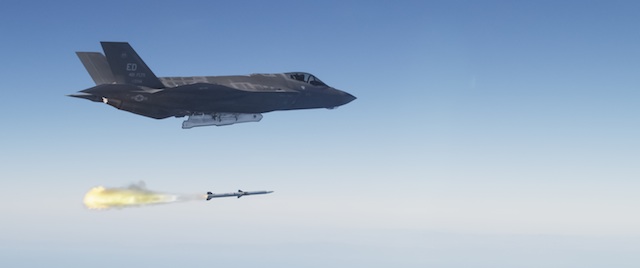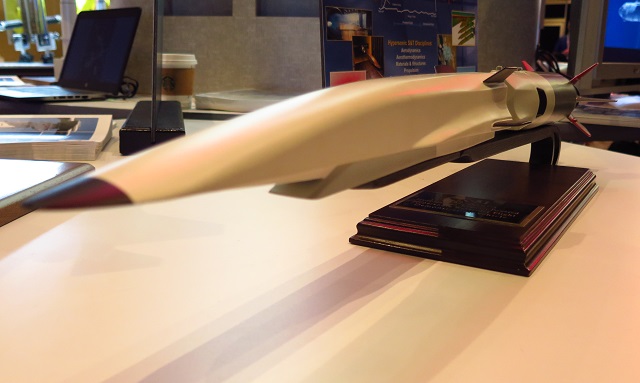The US Air Force Research Laboratory (AFRL) says it has begun early research into a miniature air-to-air missile that would be carried on the next-generation of advanced fighter jets.
Known as the Small Advanced Capabilities Missile (SACM), AFRL officials say the conceptual missile would be far smaller and cheaper than today’s advanced air-to-air missiles like the Raytheon AIM-9X and AIM-120D, and therefore might be purchased and fielded in greater quantities.
SACM is one of many next-generation munitions concepts being pursued by AFRL as the US Air Force matures its so-called sixth-generation or air dominance fighter jet that would be introduced in the 2030s.
“SACM would be an affordable, highly lethal air-to-air missile with reduced size and weight compared to current air-to-air missiles,” AFRL tell Flightglobal in a prepared statement.
“By enabling a high loadout capability and increased missile effectiveness, future fighters would be able to survive in the contested anti-access/area-denial environment and complete their missions with minimal losses.”

F-35 AIM-120D AMRAAM testing
US Air Force
AFRL is also looking at the next-generation of general purpose bombs known as GBU-X, and a powered air-to-ground missile (AGM-X) the would be rocket boosted for greater range and impact energy. GBU-X and AGM-X would also be “distributed, collaborative and cooperative” weapons for net-enabled, coordinated attacks on high-value targets.
Other concepts presented at the Air Force Association’s Air Warfare Symposium in Orlando, Florida this week include hypersonic boost-glide and scramjet-powered missiles pursued in the High-Speed Strike Weapon (HSSW) programme. According to fact sheets by AFRL, those weapons could be also wirelessly linked for coordinated attacks on integrated air defence systems.

Boeing X-51
James Drew/Flight International
AFRL is also focused on earth and concrete penetrators to attack reinforced underground facilities.
One option being considered was the rocket-boosted High-Velocity Penetrating Weapon (HVPW), although laboratory officials haven’t seen that project move forward since their technology demonstrations wrapped up.
Air Combat Command director of operations Maj Gen Thomas Deale, during a panel on close air support, called for every platform to carry more low collateral damage weapons with precision targeting and effects.
His ideal close air support platform would carry 3,000 to 4,000 rounds of ammunition and bombs that can be used reliably in close proximity to friendly forces in urban areas. “We need deeper magazines,” he says, adding that laser weapons with an unlimited amount of shots might someday solve that issue.
Source: FlightGlobal.com


























